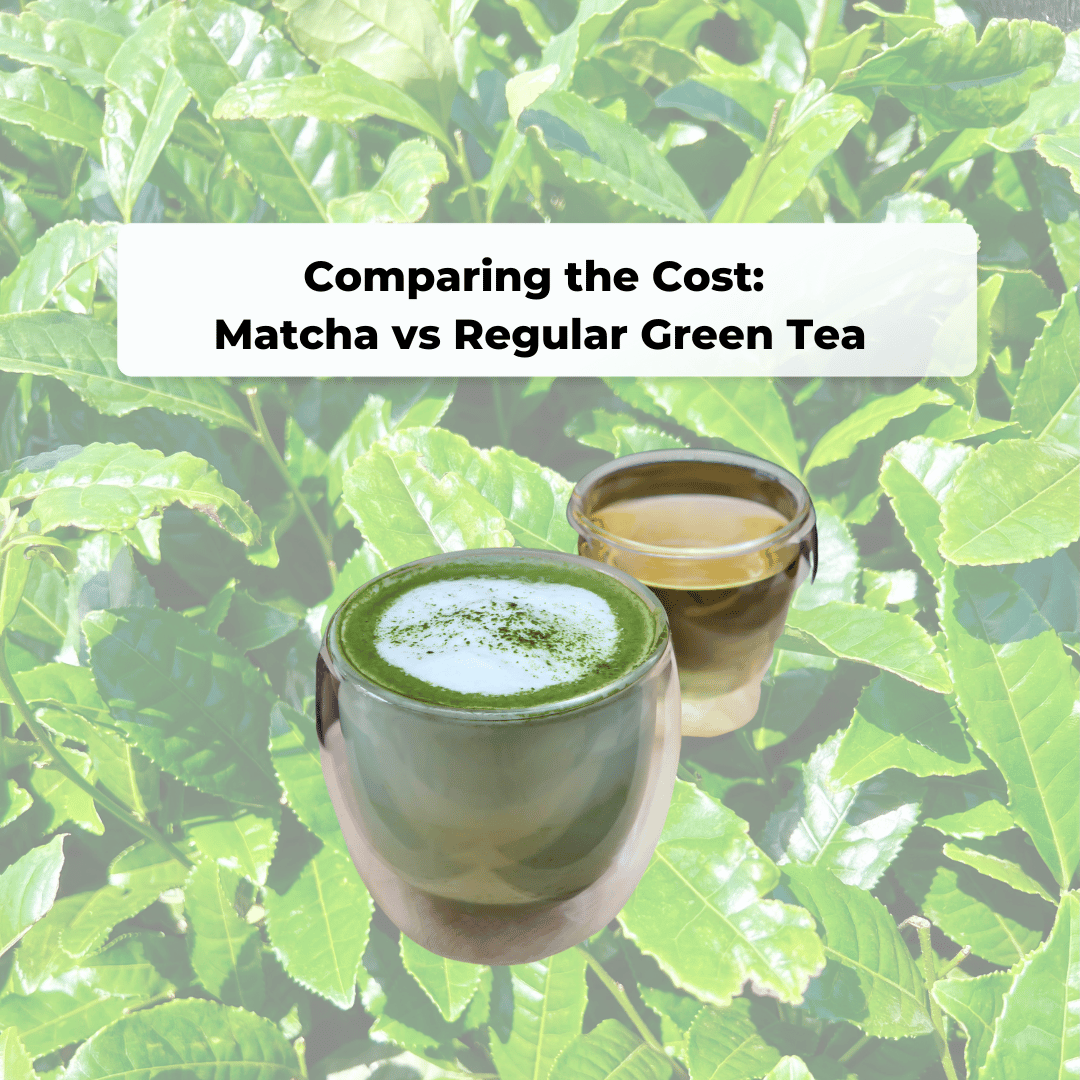Are you curious about the price tag attached to Matcha and why it’s more expensive than regular green tea?
The key reason lies in the cultivation and processing of this speciality green tea differs radically from ordinary green tea.
The Matcha production process is meticulous and labour-intensive. The method requires precision and patience, resulting in a vibrant green powder that is rich in antioxidants and nutrients.
It’s important to also highlight that sourcing authentic Matcha is geographically limited. Globally, the tea leaves that go on to make the powder are only grown in Japan. Matcha has been grown there for centuries with the experience and multi generational required to produce the best quality tea.
Its time for you to grab a cup of tea as we unravel exactly why Matcha costs more than regular Green Tea.
The Process of Growing and Harvesting Matcha
Even it takes a few seconds to dissolve in water, it takes an entire year to grow the plants that Matcha Green Tea comes from, with the soil & tea plants needing to be nurtured year round. There is careful tending to and monitoring the growth of plants that ultimately lead into the best spring harvest.
Unlike regular green tea, Matcha is made from shade-grown tea leaves. The tea plants used to make Matcha are covered with shade cloths for several weeks before harvest which is labour intensive.
 (Farmers applying shade cloth to green tea plants)
(Farmers applying shade cloth to green tea plants)
This shading process stimulates the production of chlorophyll and amino acids, which contribute to Matcha's vibrant green colour and unique flavour profile.
The tea leaves are then carefully picked either by hand or machine in Spring, with only the youngest and tenderest leaves being selected. This process ensures that only the highest quality leaves are used for Matcha production.

(Farmers machine harvesting the tea leaves)

(Tea Farmers putting tea leaves onto truck)
The labour-intensive process of producing Matcha
Once the tea leaves are harvested, they undergo a meticulous production process to transform them into Matcha powder. The leaves are first steamed to prevent oxidation and preserve their vibrant green colour.
After steaming, the leaves are air dried inside a blower that circulates them to remove any moisture.

(Leaves being air dried by being circulated by hot air)

Additionally, the tea processors crush the dried tea leaves for easy sorting and de-stemming. The de-veining & de-stemming process ensure only the finest leaves are grounded into Matcha.
Tea processors will then sort them into containers according to colour, texture, and aroma and will add hot water to the Tencha (processed tea leaves) to grade the quality of the tea.
The processors will finally store the Tencha (tea leaves) in a refrigerated room where it can maintain its quality.
When orders for Matcha Powder are received, the Tencha leaves are ground down into a fine powder using traditional stone mills then packed and shipped to the customer. Milling on demand like this ensures the very freshest Matcha reaches the end customer.
It's also important to note that the grinding process is slow and precise, ensuring that the leaves are ground into a fine powder without overheating or damaging the delicate flavours and nutrients.
Comparing the price of Matcha to other teas and beverages
When comparing the price of matcha to other teas and beverages, it's essential to consider the geographic location, quality and production methods involved.
While Matcha may seem expensive compared to regular green tea bags, the unique production process and high-quality standards found in Japan explain the higher price.
Additionally, Matcha offers a concentrated flavour and nutrient profile (as you drink the entire tea leaf), making it a more beneficial to drink for health benefits compared to other teas.
When compared to specialty coffees or other health-focused beverages, Matcha's price is often comparable or even more affordable, considering its health benefits and the small amount of tea powder used per serving.
Appreciating the value and cost of Matcha
As you can see, Matcha's high price tag can be attributed to various factors, including the geographic limitations of growing high quality Matcha in Japan, the meticulous process and skill of growing and harvesting matcha and the labour-intensive production process.
By understanding the value and cost of Matcha, we can better appreciate the craftsmanship and dedication that goes into producing this extraordinary tea.
So, the next time you sip on a cup of Matcha, remember the journey it took to reach your cup and savour every moment. Cheers to the world of Matcha!


